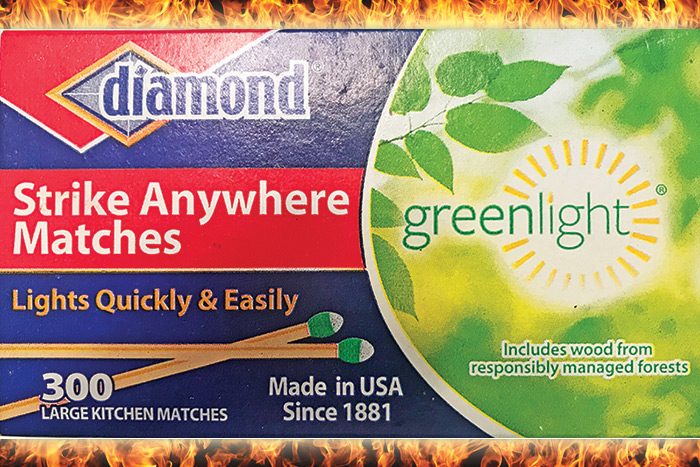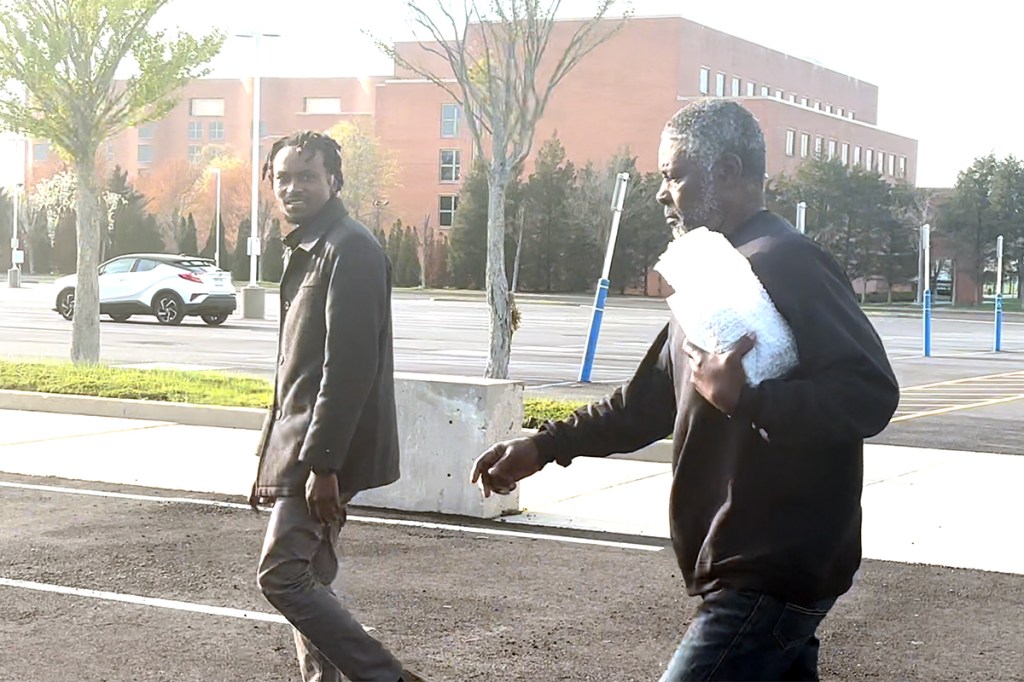An Imaginary Description of the Diamond Match Factory in Chico, CA

When winter storms come through, the snow piles up, and it is a time for people on the East End to hunker down in front of a roaring fire. I am one of them. On the coffee table in my living room, as always at this time of year, is a rectangular box of “strike anywhere” wooden kitchen matches made by Diamond.
We are all familiar with them—300 come in a red-and-blue box. They not only light when struck on any rough surface—a piece of slate, a brick, the side of a fireplace—they also light when struck on the rough patch on one long side of the box, producing a great comforting flare of a flame. The company has rightly earned its place as part of the fire-lighting experience in America.
The latest box I bought has something new on it, though. The box is not only red and blue, but also—almost half of it—an environmentally approved green, with pictures of leaves and sunshine in the background. The word “greenlight” appears on this half of the box, partially blocking a sun, and below it reads the copy, “Includes wood from responsibly managed forests.”
I should be proud, as I light my fire, sending polluting smoke out up into the atmosphere, that I am starting it in an environmentally responsible way.
Well, I take issue with this. The notice says “includes,” so it does not necessarily pertain to all the matches. It also says these forests are “responsibly managed,” where, presumably, certain forests get new saplings to replace the trees cut down into matches. Elsewhere, does this seem to suggest, trees in the wild are cut down and hauled off in a most irresponsible manner?
Because of this confusing marketing, I now reveal my picture of a big Diamond match factory—totally imaginary, mind you—that my mind considers to exist in Chico, California, not far from the forests where these matches come from. (I googled the Diamond website to learn of Chico. I also learned Diamond produces 12 billion matches a year.)
This imaginary factory is vast. It sits on the edge of a forest. Big lumber trucks deliver stacks of giant irresponsibly cut-down tree trunks into a loading bay where former longshoremen (let go after robots arrived) work unstacking, hauling and re-stacking the trunks in the warehouse attached to the factory. Inside, lumberjacks wearing goggles and using buzz saws cut each supine trunk into the pieces of lumber that, when further cut by rows of Chinese women sitting at tables wearing white hairnets and dust masks, results in the tiny wooden sticks we all know today.
Next, the tips of these sticks are briefly dipped into a soupy phosphorous vat (fire extinguishers are everywhere), then placed in rows on a moving assembly-line belt to be counted into groups of 299 and bunched into red-and-blue (and now green) boxes to be put into cartons and forklifted into the backs of waiting delivery trucks.
The pride of the factory I have conjured, however, is a three-acre plot of land out back, entirely planted in responsibly managed rows of trees. Once every month, a rabbi offers a blessing over one of the trees, which is then marked R with a marker (for “Responsible”) and cut down by strong men wielding axes, and is then gently carried inside by retired nightclub bouncers, for processing, to the longshoremen and the Chinese women.
As soon as the tree goes off, the executives of the company, in a great ceremony, walk out to where this tree was felled and, using silver shovels, have a ceremony climaxing with the digging of the first shovelful of dirt to create the hole where a new young replacement sapling will be placed. Speeches are made. A band plays.
Meanwhile, back inside the factory, the 400,000 tiny toothpick-sized responsible matchsticks are set in a fur-lined dumpster (fur from an animal shot legally) near the assembly line where the sticks go in the boxes. This line moves along swiftly, and it takes a team of six track stars to rush one special responsible match from the collecting bin to the assembly line to place it, by hand, into the pile of 299 being readied for boxing, so the full 300 “includes wood from responsibly managed forests.”
And so we strike a match for the environment.



